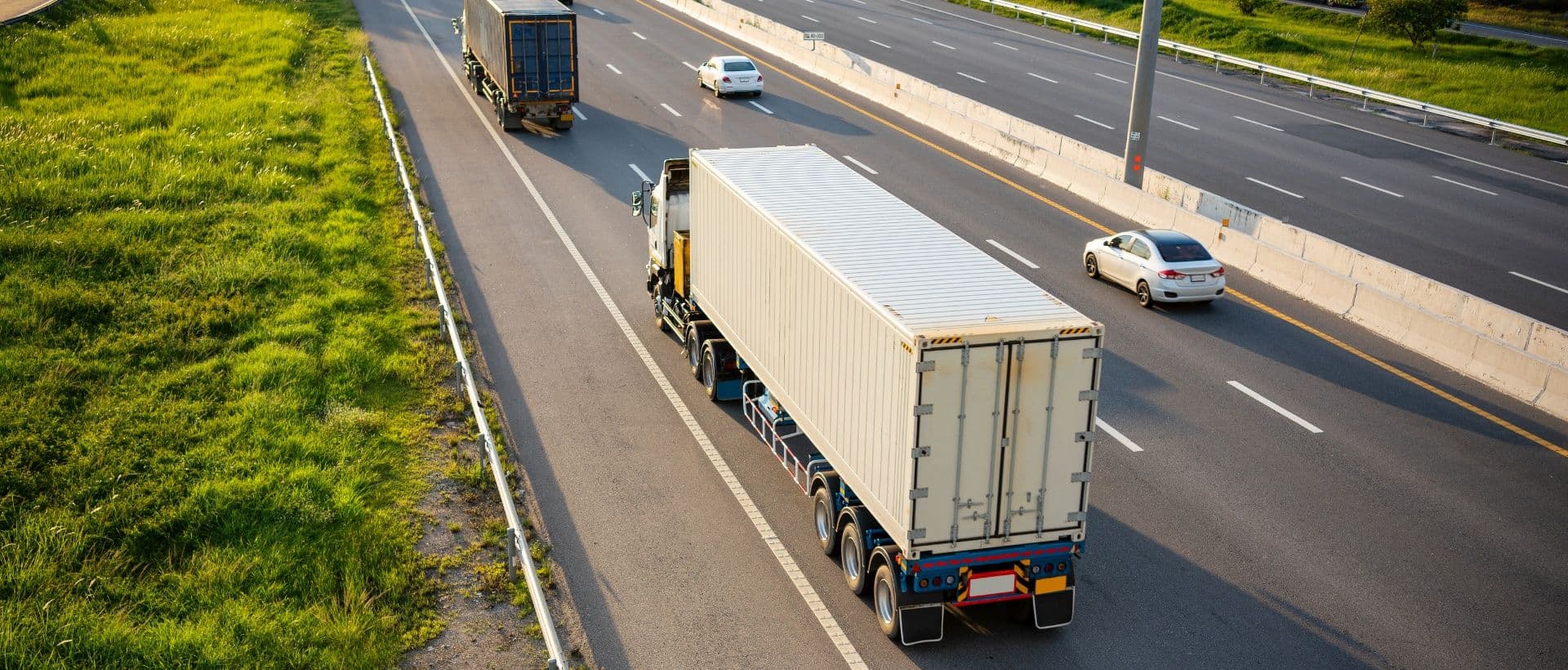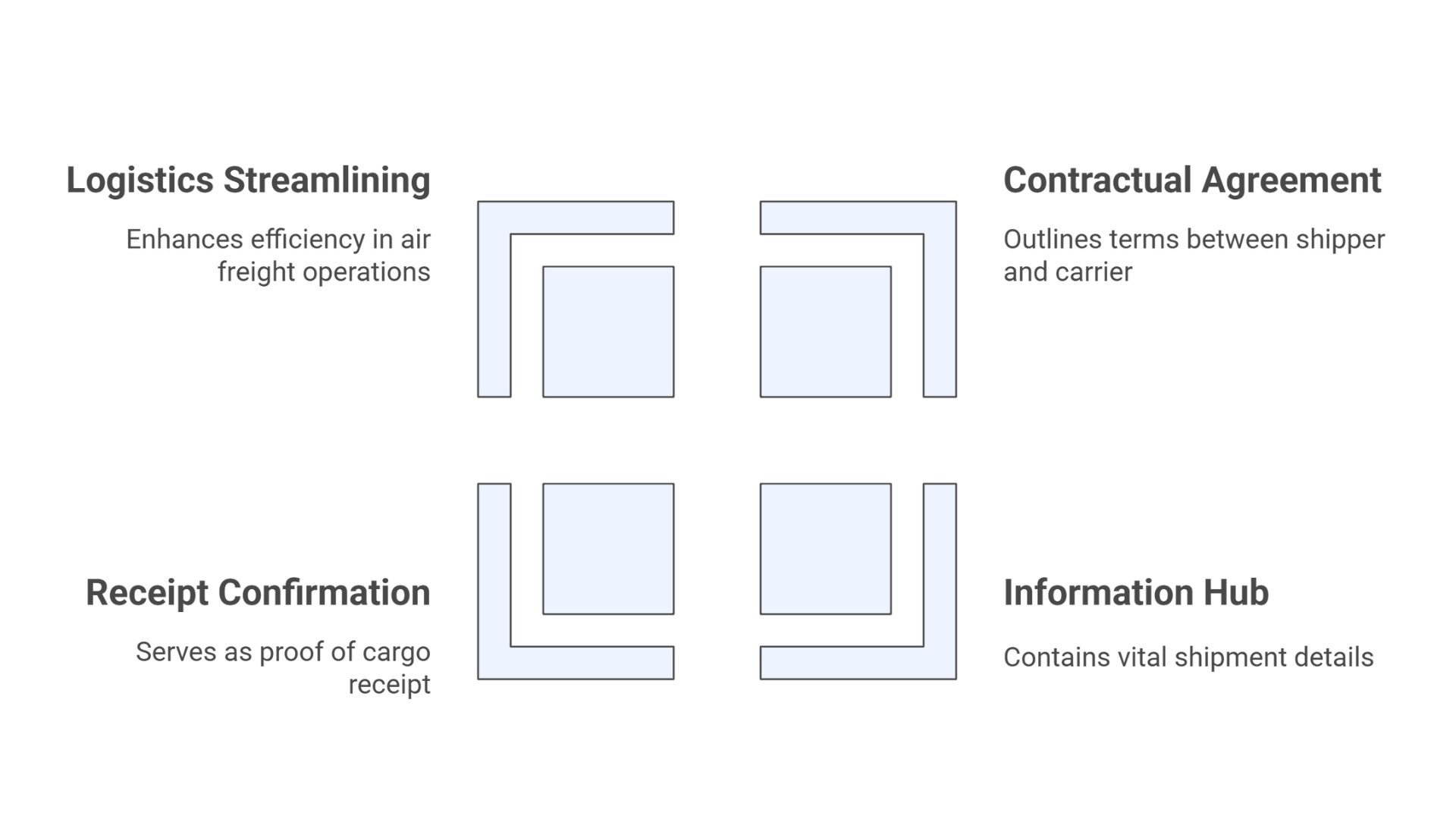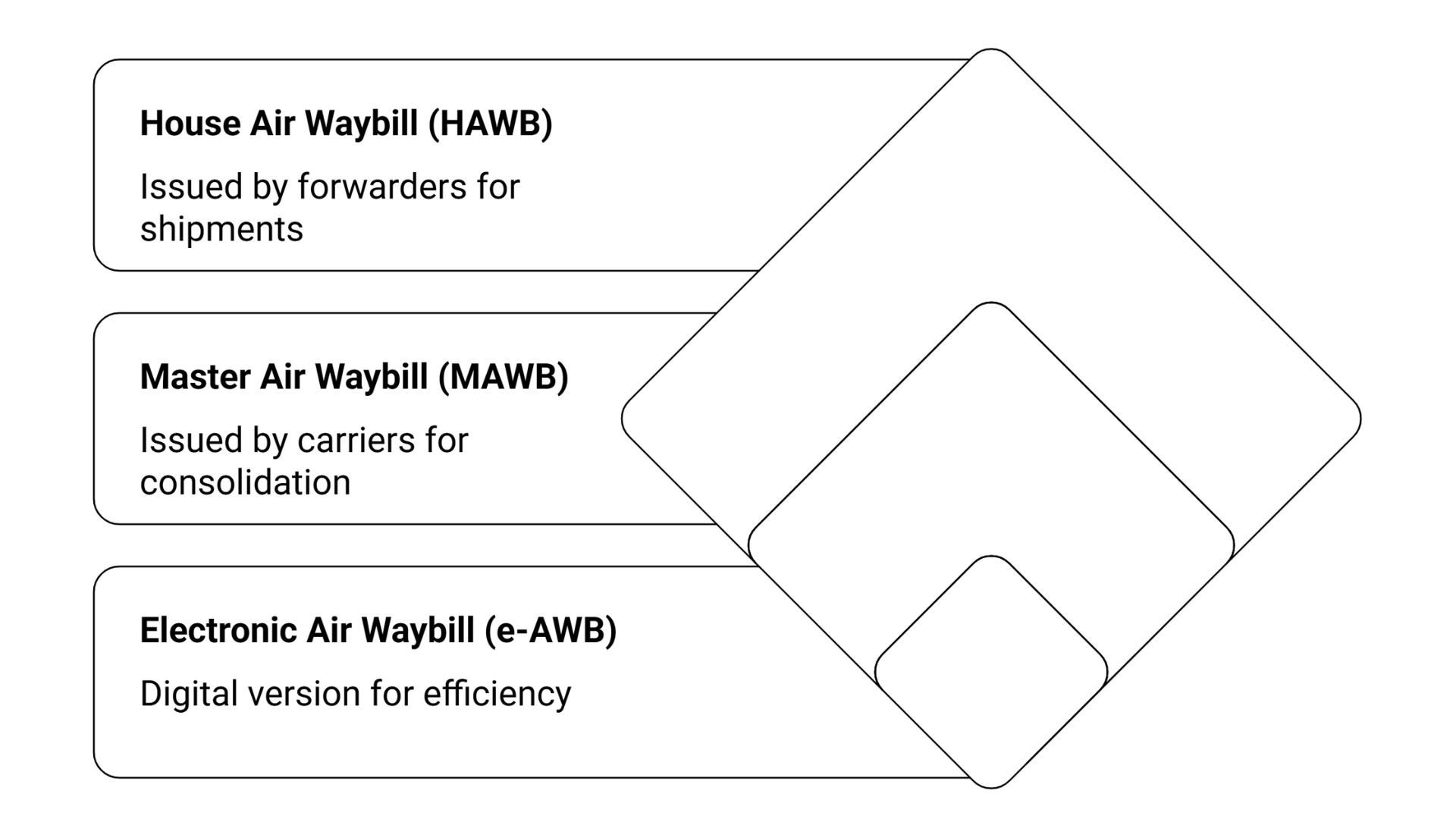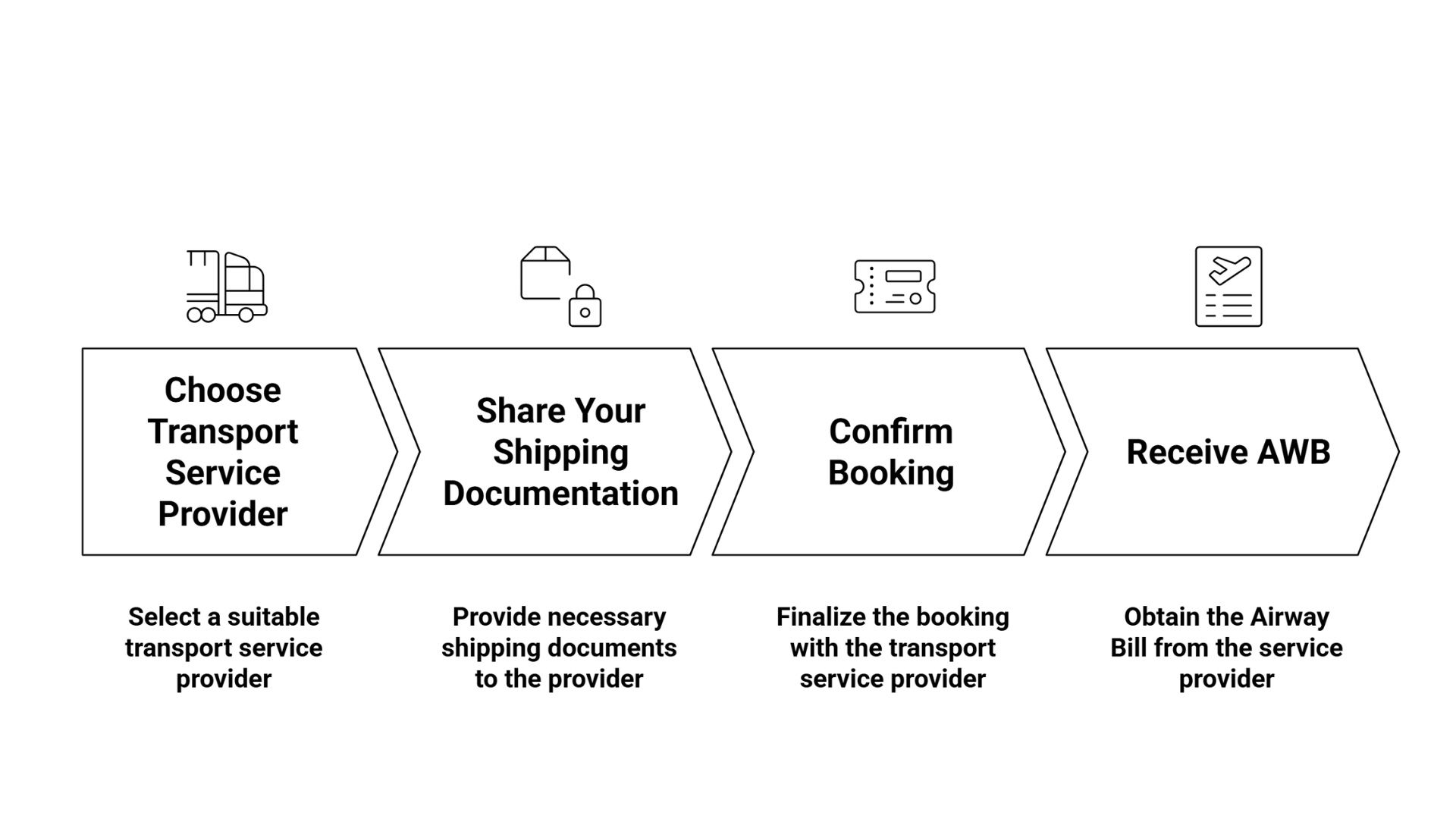
What is Airway Bill: Definition, Format, Types & Importance Explained
September 03, 2025
AAJ Swift

Every minute, 2000+ packages take flight from Indian airports, carrying everything from life-saving medicines to smartphones. Behind each of these aerial journeys, there is a series of paperwork that most of us never see, and it is nothing but "Airway Bill (AWB)."
Just as we need a passport, an airway bill is essentially the cargo's equivalent. It's a legal contract and receipt, packed with all the details about the shipment, sender, and receiver.
In short, you refer to it as the "identity of the package." So, it's not just paperwork, as without it, you can't even track your package, clear customs, or even prove its ownership.
What exactly makes the airway bill so important? And how can a simple piece of paper (or digital paper) become the reason for a smoother transaction of goods through airports?
So, let's decode everything related to airway bills and how they impact faster, cheaper, and more reliable shipments.
What Is an Airway Bill (AWB)?
In simple words, an airway bill is a legal document for air cargo shipments. It serves as both a receipt and a contract, containing all the necessary information to ensure the safe movement of goods through the air transport system.
Importance Of the Airway Bill In Transportation

These are the reasons why the airway bill is important in the world of air cargo and transportation.
- Legal Safety Net: AWB acts as a legal contract that protects both parties and outlines clear terms for transporting your cargo.
- A Confirmation receipt: Airlines use the airway bill to confirm that your goods are officially accepted for shipment and a promise to deliver them.
- Streamlined Cargo: Multiple small shipments bundled for faster transportation, cost savings, and decrease the chances of package loss.
- Tracking and Monitoring: Each AWB bill has a unique tracking number called the "AWB number" that lets you track and monitor your cargo journey.
- Custom Clearance: Provide essential non-negotiable information to clear customs along with a standardized data format.
- Shipments Details: Include details such as weight and dimensions, contents description, flight information, and any handling instructions.
- Shipping Cost: Provide a clear picture of the upfront shipping cost, including freight charges, fuel surcharges, and other applicable fees.
- Proof of shipment: In the event of a dispute or package loss, AWS serves as proof of shipment, facilitating insurance claims.
Information Mentioned on the Airwaybill
An airway bill spells out the following details about the package:
- Types and number of shipment packages
- Shipper details: name, address, and contact info.
- Consignee information: who will get the package, the destination address, and phone number.
- Flight code and details: Airline, flight numbers, departure and destination airports.
- Cargo description:
- Weight and dimensions
- Number of pieces
- Type of goods
- Any special handling instructions, such as "Caution/Fragile/Handle with Care"
- Charges: Freight costs, fuel surcharges, and any additional charges.
- Tracking Number: A unique AWB tracking number.
Format Of An Airway Bill
The format's pretty standard and easy to follow.
- Top of Airway Bill: Unique codes, barcodes, tracking codes, dates, agent/airline information
- Package Details Column: Number of boxes and sections.
- Boxes 1-3: Shipper and consignee details.
- Boxes 4-8: Airport codes and flight routing
- Middle Section: Cargo information such as number of pieces, weight, and item name.
- Handling details and codes: Special instructions, such as those requiring refrigeration or extra care, will be addressed here.
- Button Section: Rate and charge information with taxes or any customs duties.
Explaining the 3 Main Types Of Airway Bill

There are mainly three types of airway bills in air cargo. Each is formatted based on the shipment types (B2B or B2C). Here are all three:
1. House Air Waybill (HAWB)
The freight forwarder or logistics agent prepares the HAWB for each standard shipping. You can refer to it as an agreement document between the freight forwarding company and each shipper.
These bills serve as a main documentation between forwarders and their customers when cargo is consolidated (for an MAWB) for air transport.
Key Characteristics of HAWB:
- Issue exclusively by freight forwarder (or consolidators' hubs/logistics), not by airlines.
- Created when the shipment arrived at the consolidation hub by the individual shipper.
- Have all details of cargo, shippers, and airlines.
- Several smaller HAWBs are packed together under an MAWB (for a more organized and less chance of package loss).
2. Master Air Waybill (MAWB)
MAWB is the air carrier or airline that ships directly to freight forwarders or shippers. The airline covers the entire shipment from its origin to the destination airport.
Here, the origin and destination airports are the same, just like B2B transportation by FTL.
Some key features of MAWB:
- Covers Consolidated Cargo: Having multiple individual shipments under one master document.
- Provide a single reference point: Single forwarder or shipper details and contact details.
- Includes multiple HAWB: Multiple HAWB consolidated into a big MAWB and saves cost (it's like PTL transport).
- Issued by carrier vs. forwarder: MAWB by airline and individual HAWB by freight forwarders.
3. Electronic Air Waybill (e-AWB)
It is a digital form of MAWB and HAWB. Most of the customers and airline loaders are equipped with tablets and barcode readers to update the information faster. There is nearly no paperwork, thus faster processing with fewer mistakes.
Most airports have already switched to e-AWB because it is also easier, greener, and helps avoid the "lost paperwork" headache. Additionally, it also offers way better tracking.
How To Get an Airway Bill? Step-By-Step Process

So, you want to get an airway bill? Honestly, it's not rocket science, but if you're shipping goods for the first time, then it might be tricky.
First disclaimer, as a shipper, you can't create an AWB bill. It is a job of a logistics or shipping company.
Who Issues the AWB:
- Airlines will hand out Master Airway Bills (MAWB).
- Logistics partners or Freight forwarders typically provide you with House Airway Bills (HAWBs).
- Licensed shipping companies or companies such as FedEx, AAJ Swift, DHL.
Step-by-Step Process to Get Your Airway Bill
The following are the steps involved in getting your airway bill for the first time (or every time you need to ship through airways):
Step 1: Choose Transport Service Provider
The first step is to book cargo space with the transport service provider. Here is the choosing criteria:
- Freight forwarder: For most small shipments with limited convenience.
- Reach out to airlines directly: If you ship regularly and in larger volumes.
- Transport Companies: Connect with companies like AAJ Swift, FedEx, etc. These companies not only provide full tracking but also offer convenience, such as door-to-door LTL freight shipping.
Step 2: Share Your Shipping Documentation
Share the following essential details with your AWB provider:
- Shipper details: Full company name, address with zip code, phone number, VAT/GST number.
- Consignee details: Full name or company name with address details.
- Shipment details: number of packages, actual weight/volumetric weight, and any special handling instructions.
- Booking Details: Pickup date/time, and delivery date.
- Value of Goods: Declare the value of items for customs and tax calculations.
Step 3: Confirm Booking
Review and confirm the rates, terms, and flight details. Once you have reviewed all the details, made the payment, and confirmed your booking, it will be confirmed.
Step 4: Receive AWB
The carrier hands over a copy of the Air Waybill (or electronic Air Waybill) for faster processing and reduced errors.
In AWB, you receive a unique tracking number and proof that your shipment will be delivered by the airline to the destination airport.
Conclusion
We hope you receive all the details on why airway bills are important and how they facilitate the shipping of goods by air.
So, whether you need HAWB or MAWB services, choosing the right logistics partner makes all the difference, and at the same time adds convenience and cuts down on any shipping headaches.
What are you waiting for? Contact the transport company today for a reliable transportation solution. It handles your airway bill document seamlessly, and optimizes deliveries with 99% on-time delivery across India.

